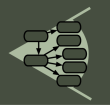|
Difference between
version 9
and
version 8:
| Line 6 was replaced by line 6 |
| - * __For each capability, include the importance (e.g., generally applicable across or only within certain projects/disciplines) and corresponding features needed to support the capability in the model.__ |
| + * __For each capability, include the importance (e.g., generally applicable across or only within certain projects/disciplines) and corresponding features needed to support the capability in a shared observation model.__ |
| Line 11 was replaced by line 11 |
| - The need for a shared data model for scientific observations is motivated by the capabilities that such a model would support, and these capabilities will determine the degree of detail and formalization required in the model. Many different uses of a shared observational data model can be envisioned. The goal of this session is to identify needed capabilities, resolve the importance and potential for these capabilities, and to clarify the modeling requirements needed to enable these capabilities. Examples of capabilities that an observational data model could facilitate include: improved discovery of relevant observations across highly heterogeneous collections of data; clarification of semantic relationships among observations that might have been taken under varying data collection protocols or as part of differing experimental regimes; and the integration of observational data to facilitate new scientific analyses. |
| + The need for a shared data model for environmental observations is motivated by the capabilities that such a model would support, and these capabilities will determine the degree of detail and formalization required in the model. Many different uses of a shared observational data model can be envisioned. The goal of this session is to identify needed capabilities, resolve the importance and potential for these capabilities, and to clarify the modeling requirements needed to enable these capabilities. Examples of capabilities that an observational data model could facilitate include: improved discovery of relevant observations across highly heterogeneous collections of data; clarification of semantic relationships among observations that might have been taken under varying data collection protocols or as part of differing experimental regimes; and the integration of observational data to facilitate new scientific analyses. |
Back to Observations Workshop 2007 Session 2,
or to the Page History.
|








